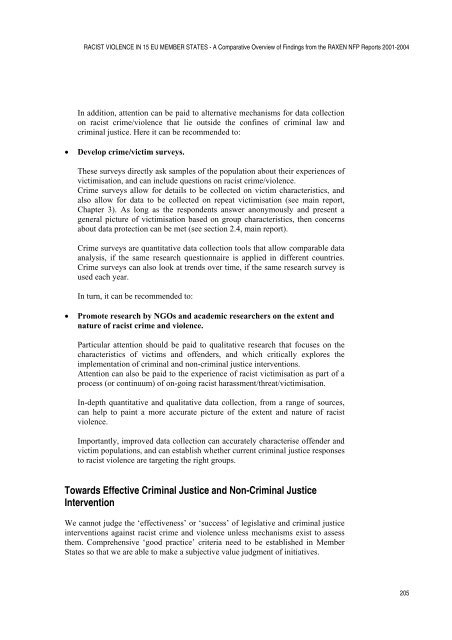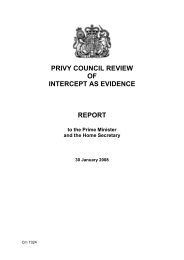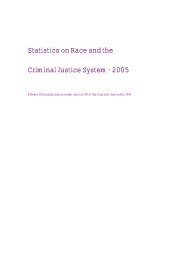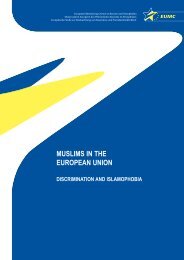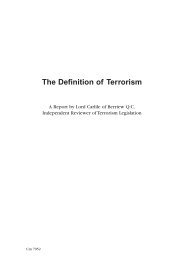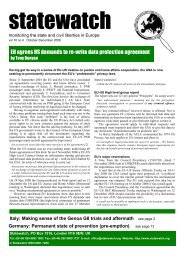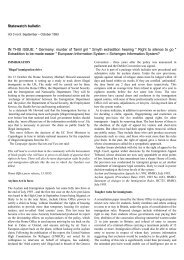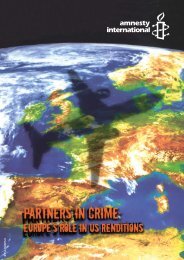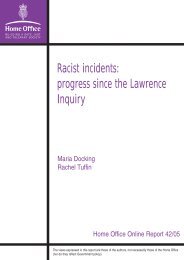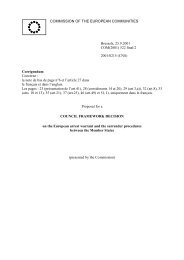RACIST VIOLENCE IN 15 EU MEMBER STATES - Cospe
RACIST VIOLENCE IN 15 EU MEMBER STATES - Cospe
RACIST VIOLENCE IN 15 EU MEMBER STATES - Cospe
Create successful ePaper yourself
Turn your PDF publications into a flip-book with our unique Google optimized e-Paper software.
<strong>RACIST</strong> <strong>VIOLENCE</strong> <strong>IN</strong> <strong>15</strong> <strong>EU</strong> <strong>MEMBER</strong> <strong>STATES</strong> - A Comparative Overview of Findings from the RAXEN NFP Reports 2001-2004<br />
In addition, attention can be paid to alternative mechanisms for data collection<br />
on racist crime/violence that lie outside the confines of criminal law and<br />
criminal justice. Here it can be recommended to:<br />
• Develop crime/victim surveys.<br />
These surveys directly ask samples of the population about their experiences of<br />
victimisation, and can include questions on racist crime/violence.<br />
Crime surveys allow for details to be collected on victim characteristics, and<br />
also allow for data to be collected on repeat victimisation (see main report,<br />
Chapter 3). As long as the respondents answer anonymously and present a<br />
general picture of victimisation based on group characteristics, then concerns<br />
about data protection can be met (see section 2.4, main report).<br />
Crime surveys are quantitative data collection tools that allow comparable data<br />
analysis, if the same research questionnaire is applied in different countries.<br />
Crime surveys can also look at trends over time, if the same research survey is<br />
used each year.<br />
In turn, it can be recommended to:<br />
• Promote research by NGOs and academic researchers on the extent and<br />
nature of racist crime and violence.<br />
Particular attention should be paid to qualitative research that focuses on the<br />
characteristics of victims and offenders, and which critically explores the<br />
implementation of criminal and non-criminal justice interventions.<br />
Attention can also be paid to the experience of racist victimisation as part of a<br />
process (or continuum) of on-going racist harassment/threat/victimisation.<br />
In-depth quantitative and qualitative data collection, from a range of sources,<br />
can help to paint a more accurate picture of the extent and nature of racist<br />
violence.<br />
Importantly, improved data collection can accurately characterise offender and<br />
victim populations, and can establish whether current criminal justice responses<br />
to racist violence are targeting the right groups.<br />
Towards Effective Criminal Justice and Non-Criminal Justice<br />
Intervention<br />
We cannot judge the ‘effectiveness’ or ‘success’ of legislative and criminal justice<br />
interventions against racist crime and violence unless mechanisms exist to assess<br />
them. Comprehensive ‘good practice’ criteria need to be established in Member<br />
States so that we are able to make a subjective value judgment of initiatives.<br />
205


